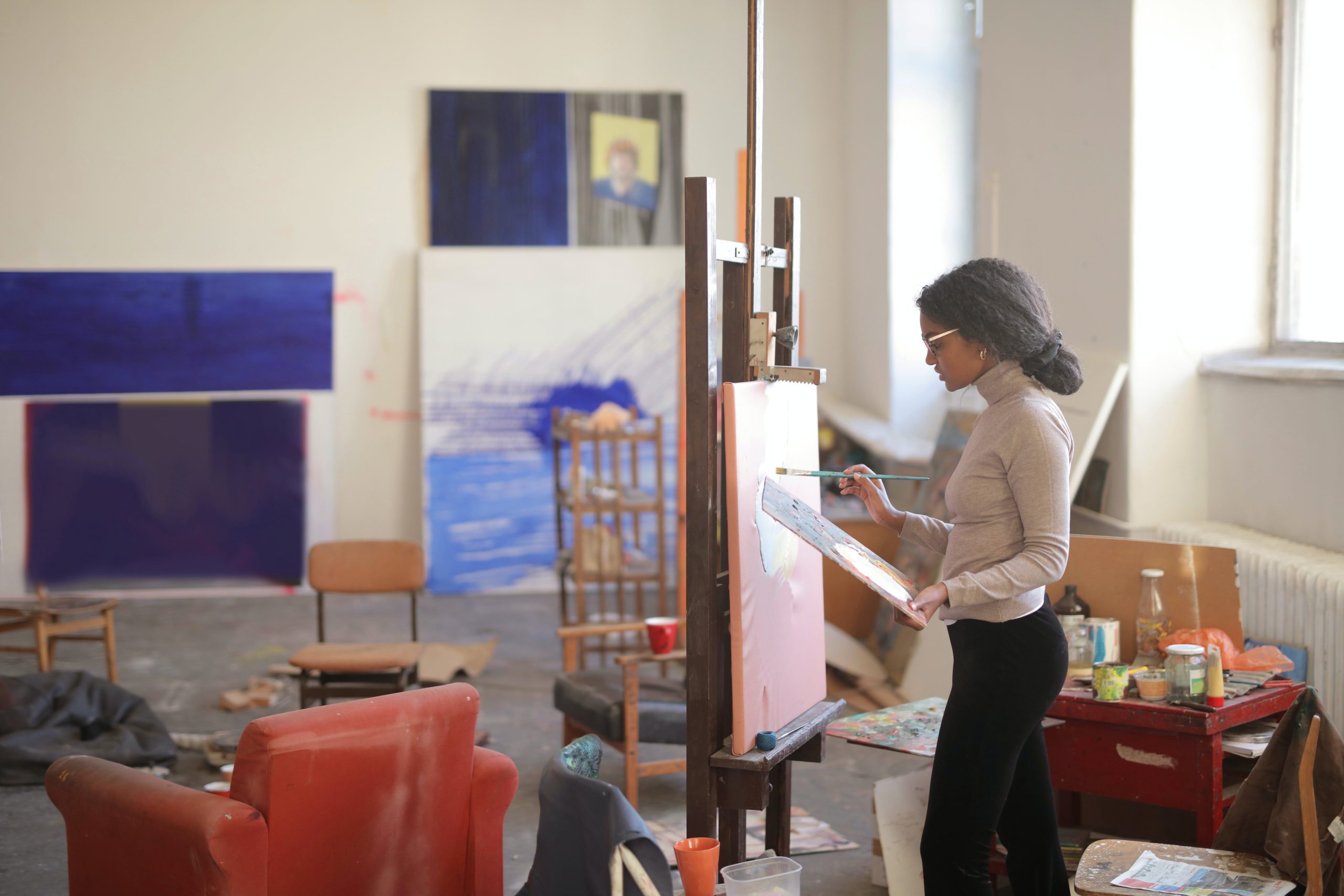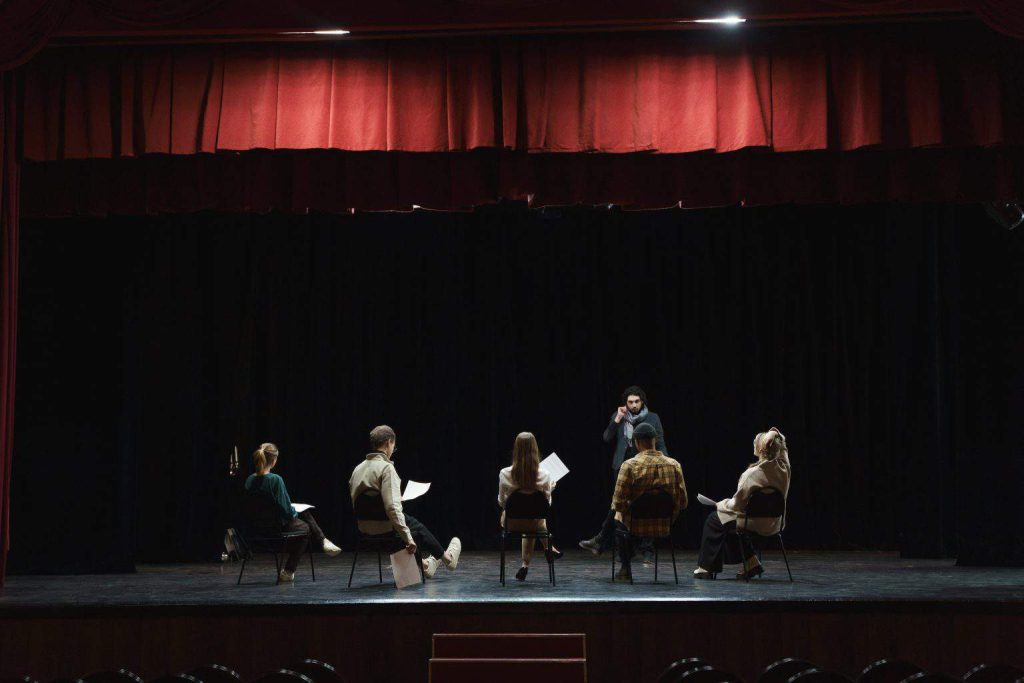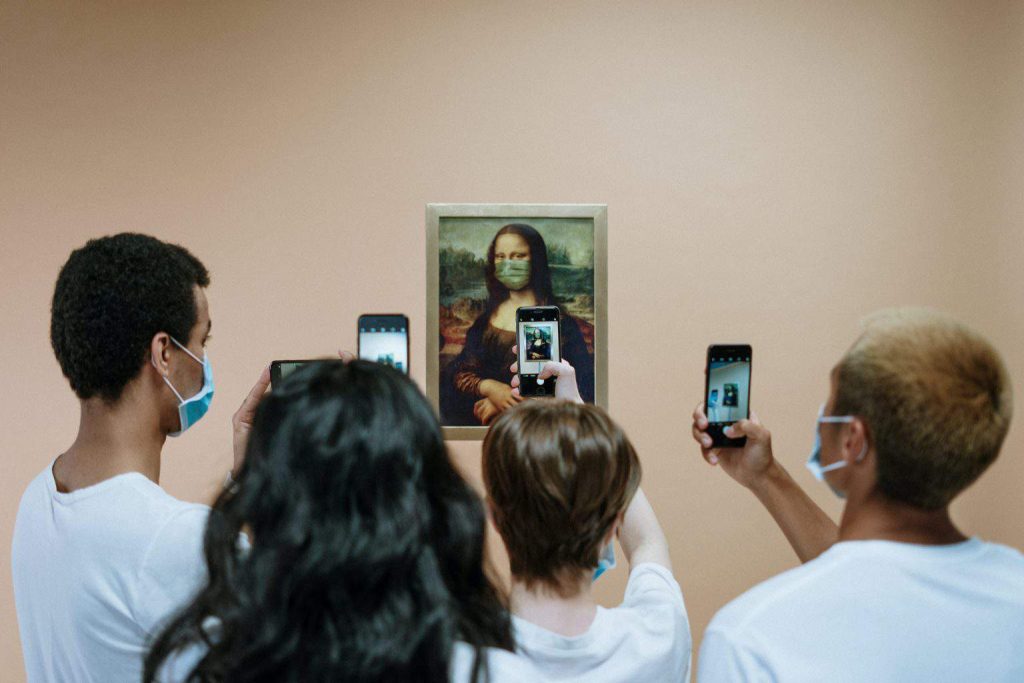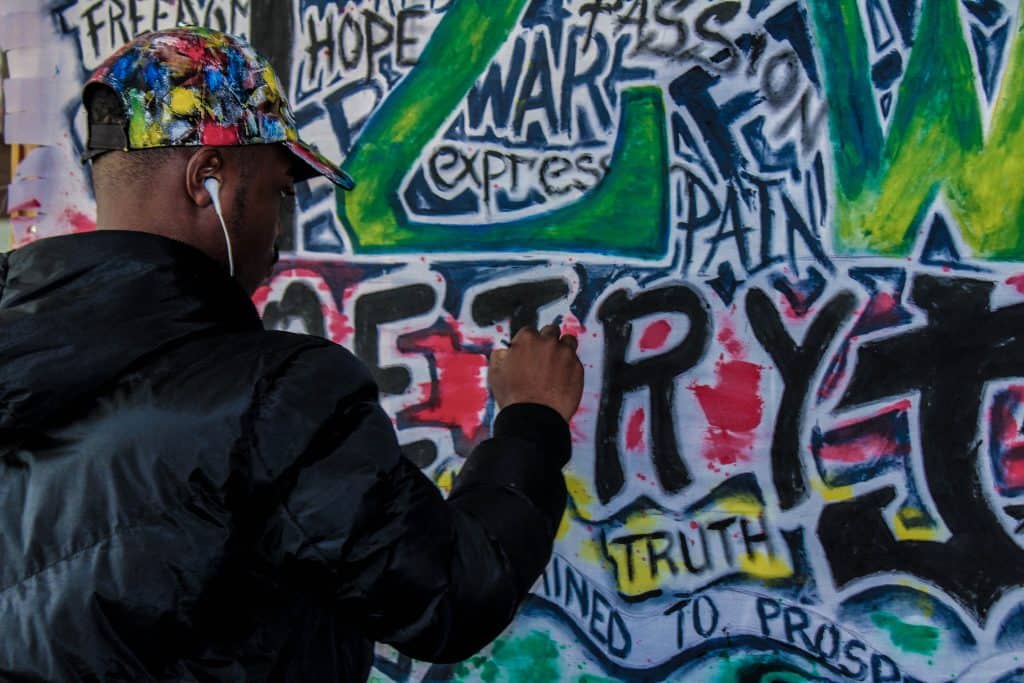
23 Jan Contemporary Art as a Global Dialogue
Contemporary art serves as a dynamic force in fostering a global dialogue by employing diverse strategies. Artists often tap into shared human experiences, addressing universal themes like identity, love, and environmental concerns. This approach allows their work to resonate across cultural boundaries, creating a shared emotional and intellectual experience that transcends linguistic differences. Additionally, cross-cultural collaborations play a pivotal role in contemporary art, bringing together artists from different corners of the world. Through these collaborations, artists merge unique perspectives and cultural influences, producing works that not only celebrate global diversity but also deepen understanding of one another’s traditions and histories. The integration of technology further amplifies the impact of contemporary art, as social media and digital platforms allow artists to instantly share their creations with a global audience, breaking down geographical barriers and connecting people worldwide.
Additionally, modern artists use their works to challenge and confront established standards, therefore engaging with current societal concerns. Through exploring subjects like injustice, fairness, and human rights, artists initiate thought-provoking dialogues that have a worldwide impact and promote constructive social transformation. To put it simply, modern art, with its common themes, cross-cultural partnerships, and technological embrace, functions as a potent worldwide catalyst for connection, celebrating variety and dispelling stereotypes.
Strategies of Global Dialogue in Contemporary Art

Photo by cottonbro studio
Shared Themes and Experiences
To produce works that cross cultural barriers, contemporary artists strongly emphasize addressing universal human concerns. Through exploring topics like immigration, identity, politics, and the environment, these artists explore the essence of experiences that all people share. Using their artistic productions, they provide a lens that reflects the commonalities inside the human experience, cultivating bonds between widely separated groups of people. These pieces of art have the capacity to evoke strong emotions and thought responses in viewers, which enables individuals from diverse backgrounds to come together and show empathy while facing similar difficulties. Engaging with global issues is a defining characteristic of contemporary art, where artists actively contribute to global conversations. Through their work, artists become advocates for change by tackling issues like climate change, pandemics, and social inequality. The art becomes a dynamic medium for expressing collective concerns, provoking thought, and inspiring action on a global scale. In this way, contemporary artists not only reflect the world’s challenges but actively participate in shaping its future by fostering awareness and understanding through their creative expressions.
Cross-cultural Collaboration and Exchange
International Art Partnerships and Residencies break down cultural barriers, enabling artists from diverse backgrounds to collaborate and share ideas, fostering a global artistic community rooted in diversity and mutual understanding. The distinctive feature of contemporary art lies in Merging Artistic Traditions and Techniques, where artists actively blend influences to create visually stunning hybrid artworks, emphasizing the interconnectedness of global cultures. This fusion not only contributes to a more inclusive and globalized art scene but also serves as a testament to the richness of diverse artistic traditions worldwide. Furthermore, the transformative aspect of Exploring Hybrid Identities in contemporary art challenges stereotypes and promotes cultural diversity by delving into the complexity of identity, ultimately contributing to a more nuanced and inclusive representation of human diversity within the art world.
Challenging Dominating Narratives and Perspectives
Contemporary art plays a crucial role in social justice by Giving Voice to Marginalized Communities. Artists use their platform to amplify historically ignored narratives, advocating for social change and contributing to a more equitable representation of diverse human experiences. Concurrently, Questioning Power Structures is inherent in contemporary art, with artists critically engaging established ideologies. This prompts viewers to reevaluate societal norms and power dynamics, fostering a culture of introspection and dialogue on authority, influence, and power distribution. Additionally, contemporary art contributes to society by Promoting Critical Thinking, as artists create thought-provoking pieces challenging assumptions. This stimulates intellectual inquiry, encouraging individuals to develop their perspectives and actively engage with societal issues for a more informed and thoughtful society.
The Role of Technology and Accessibility
Technology, particularly through online platforms and social media, revolutionizes contemporary art by fostering global connections and democratizing access. This digital interconnectedness broadens artists’ reach, enabling them to share their work globally and creating a more inclusive art community. Virtual exhibitions and interactive art experiences further utilize technology to overcome geographical barriers, providing immersive online access to diverse audiences worldwide. This digital format transcends traditional limitations, making art accessible regardless of physical location and enriching the global art landscape. Overall, technology’s pivotal role in democratizing access to art contributes to building a more interconnected and diverse artistic community, transforming the way art is created, shared, and experienced.
Key Takeaways
- Global Catalyst: Contemporary art serves as a powerful tool for fostering a global dialogue, transcending geographical boundaries.
- Connecting Diverse Perspectives: Acts as a bridge, connecting individuals from diverse backgrounds through shared themes, collaborations, and the challenge of dominant narratives.
- Strategic Approaches: Strategies include addressing universal human concerns, cross-cultural collaborations, and questioning established power structures.
- Technology’s Role: Utilizes online platforms and virtual exhibitions to facilitate global connections, democratizing access to diverse cultural expressions.
- Positive Impact: Contributes positively to cultural understanding and social change by fostering empathy and challenging societal norms.
- Acknowledging Challenges: Recognizes challenges such as cultural appropriation, elitism, and accessibility issues that contemporary art faces.
- Future Priorities: Solutions involve prioritizing cultural sensitivity, enhancing accessibility, and fostering inclusivity for the continued enrichment of the global conversation.
Impact and Challenges Contemporary Art

Photo by cottonbro studio
Positive Impact of Contemporary Art
A significant contribution to fostering societal change and enhancing cross-cultural understanding is made by contemporary art. Contemporary art uses a variety of forms and emotions to facilitate empathy-building amongst people from various backgrounds. It can help individuals connect on a more profound and emotional level by bridging language and cultural divides. Moreover, modern art frequently serves as a trigger for thought-provoking conversation by offering a forum for talks on significant societal concerns. Modern artists encourage critical thinking and spark thought by questioning social standards; this promotes an open and progressive society.
Acknowledging Challenges
Despite its positive contributions, contemporary art is not without its challenges. One notable concern is the issue of cultural appropriation, where artists may unintentionally or knowingly borrow elements from a culture that is not their own. This can lead to misinterpretations, misunderstandings, and perpetuation of stereotypes. Additionally, the art world has been criticized for elitism, creating barriers that limit access to certain groups or communities. Accessibility issues, both in terms of physical spaces and economic considerations, can hinder the inclusivity of contemporary art, preventing it from reaching a broader audience.
Solutions and Future Directions
In recognizing these challenges, it becomes imperative to seek solutions and chart future directions for the global art scene. One key aspect is the promotion of cultural sensitivity within the artistic community. This involves a greater awareness of diverse cultural perspectives, fostering collaboration, and ensuring that artistic expressions are respectful and inclusive. Enhancing accessibility is another critical step, breaking down barriers to entry by making art spaces more physically accessible and addressing economic disparities. Finally, fostering inclusivity requires actively seeking out and amplifying voices from underrepresented communities, providing platforms for diverse artists to share their stories and perspectives. By taking these crucial steps, contemporary art can continue to evolve as a force for positive change, engaging with a global audience in a meaningful and inclusive way.

Photo by Trust “Tru” Katsande
Conclusion
Contemporary art emerges as a powerful catalyst for global dialogue, transcending geographical confines to connect artists and audiences worldwide. Through shared themes, cross-cultural collaborations, and the utilization of technology, contemporary art acts as a bridge, fostering mutual understanding and challenging prevailing narratives. Addressing universal human concerns and engaging with pressing global issues, artists contribute to a diverse conversation that reflects the shared human experience. By blending artistic traditions, exploring hybrid identities, and amplifying the voices of marginalized communities, contemporary art becomes a vehicle for social justice and critical reflection on established power structures.
However, the impact of contemporary art is not without challenges. Issues such as cultural appropriation, elitism, and accessibility barriers must be acknowledged and addressed to fully realize its transformative potential. To fortify global dialogue through art, future efforts should prioritize cultural sensitivity, enhance accessibility, and foster inclusivity, ensuring that contemporary art continues to play a pivotal role in enriching the global conversation and inspiring a more interconnected and empathetic world.
FAQs
How does contemporary art address global issues like climate change?
Contemporary art serves as a powerful tool for addressing pressing global issues such as climate change. Artists engage with this complex challenge through a myriad of creative expressions, employing visual storytelling, installations, and collaborative projects. They harness the emotive and evocative nature of art to raise awareness about the environmental crisis and encourage dialogue among diverse audiences. Through paintings, sculptures, and multimedia installations, artists convey the urgency and gravity of climate change, often using symbolism and vivid imagery to evoke visceral responses. Collaborative efforts with scientists and communities provide a holistic approach, fostering a deeper understanding of the interconnected issues surrounding environmental degradation.
Can contemporary art truly challenge dominant narratives and power structures?
By amplifying marginalized voices and offering alternative perspectives, artists actively disrupt established norms. Their work prompts viewers to question ingrained beliefs, ideologies, and societal structures. Through this process, contemporary art fosters critical thinking and contributes to a more inclusive and nuanced understanding of the world. By challenging the status quo, artists pave the way for a broader and more diverse representation of voices, ultimately reshaping dominant narratives and power dynamics.
How can individuals contribute to the global dialogue through contemporary art?
Individuals can actively contribute to the global dialogue through contemporary art in various ways. Supporting artists by attending exhibitions, purchasing artwork, or engaging with them on social media platforms helps sustain and amplify their impact. Actively participating in discussions surrounding contemporary art allows individuals to contribute their unique perspectives, enriching the ongoing global dialogue. Encouraging educational initiatives that promote the understanding and appreciation of contemporary art also plays a crucial role in creating a more informed and engaged global audience. By actively involving themselves in the world of contemporary art, individuals become integral contributors to the ongoing discourse on pressing global issues.
Look into the diverse landscape of “Artist Residencies: Opportunities and Benefits” for contemporary artists, offering a detailed exploration of opportunities, resources, and transformative experiences that these programs provide to foster artistic growth and collaboration.

